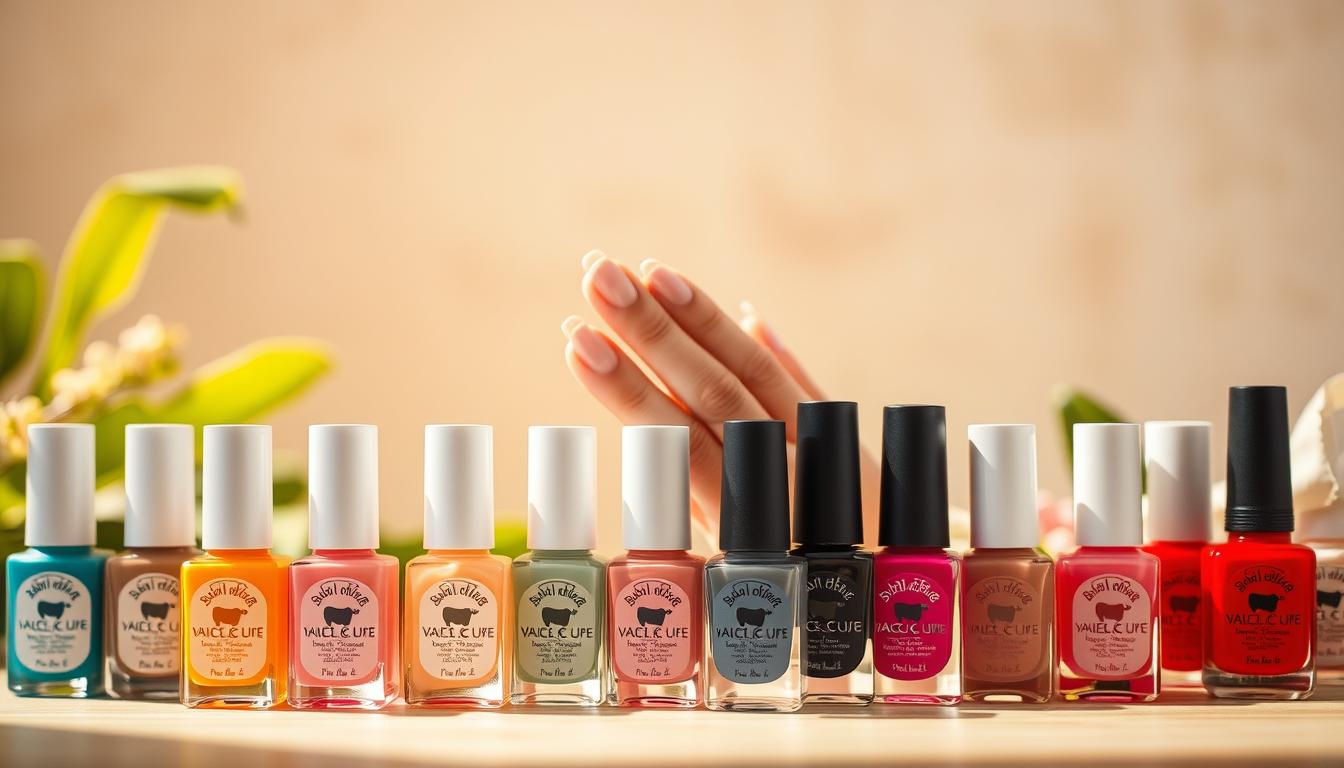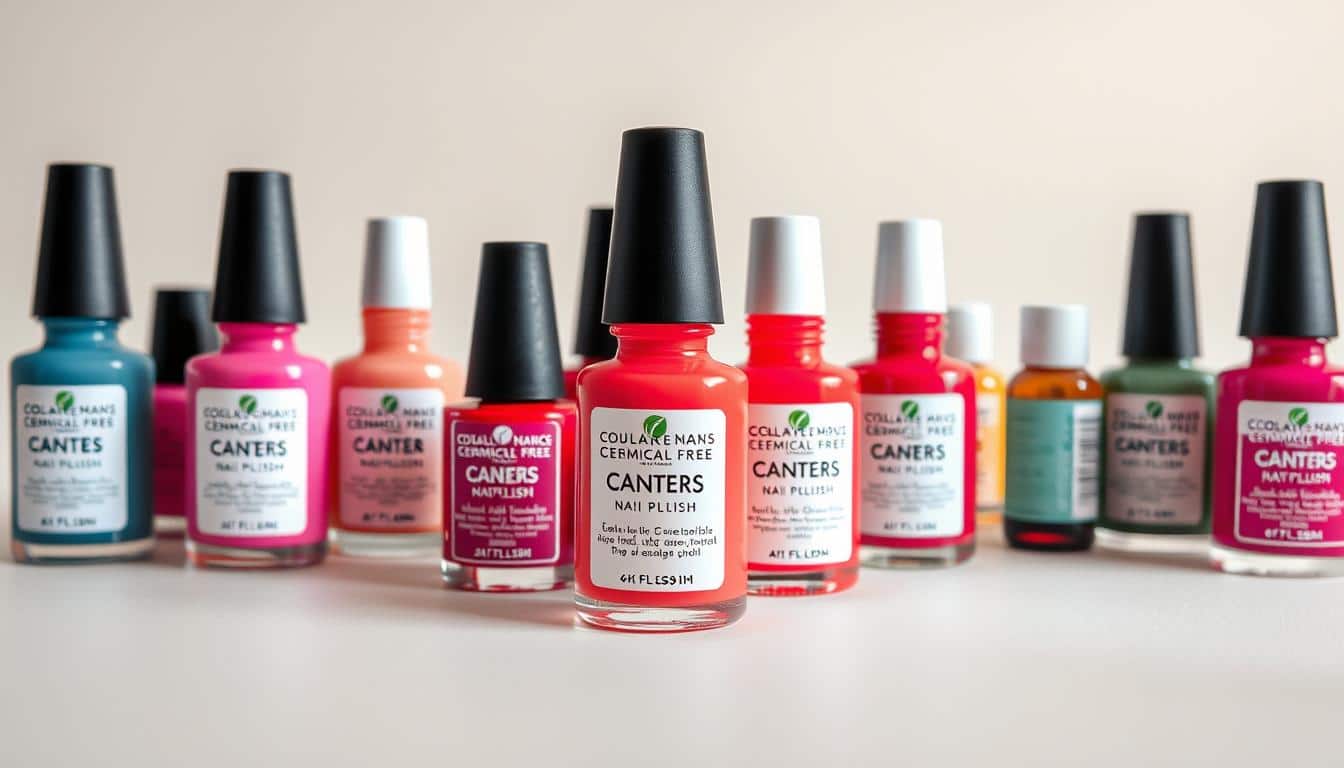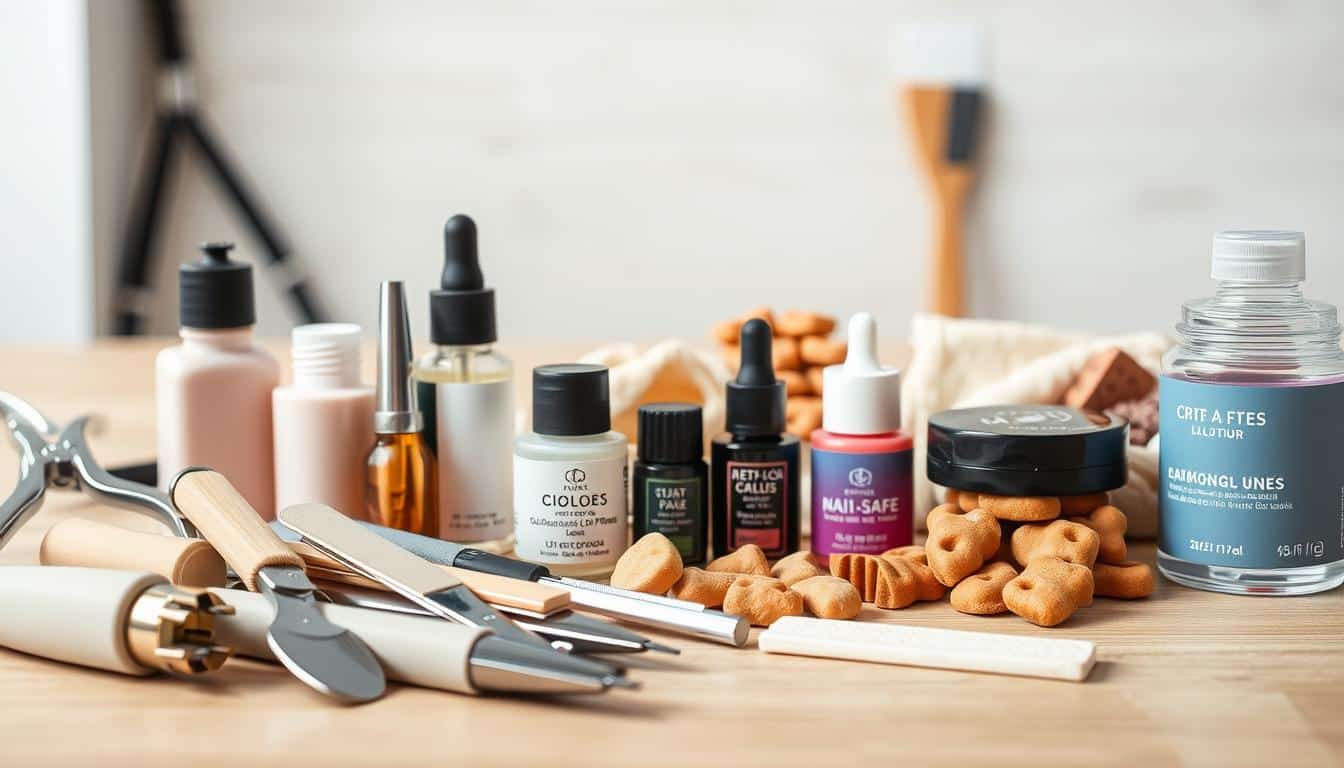Anúncios
People are becoming more aware of how to keep the planet safe. This includes how we take care of our pets. Being a green pet owner not only helps the Earth. It also makes your pets healthier. You can lower your pet’s environmental impact by following a few eco-friendly tips. This guide will help pet owners learn how to add green habits into their lives. It shows how pets and the environment can both benefit greatly.
The Importance of Eco Friendly Pet Care
Eco-friendly pet care is essential in reducing pets’ impact on the earth. More and more people in the U.S. are owning pets. Around 89 million dogs and 74 million cats use up resources. Pet owners have the power to make choices that improve our planet’s health. Using eco-friendly methods helps the environment, preserves wildlife, and keeps ecosystems healthy.
Even small steps by pet owners can lead to big changes. For example, picking natural pet care products and eco-friendly food can lower pets’ environmental footprints. By choosing eco-friendly pet care, owners help safeguard the earth for the next generations.

Understanding Your Pet’s Environmental Impact
Pets add a lot to our environmental footprint. Their eating habits have a big effect. Studies show pet diets cause 25-30% of animal production’s environmental impacts. This includes land use and water use. And also greenhouse gas emissions.
Choosing pet food is important for their health and the planet. Sustainable pet food lessens their diet’s environmental harm. Also, managing pet waste right is crucial. If we ignore it, pet waste hurts the environment. It can pollute and add to greenhouse gases.
Knowing this helps pet owners make better decisions. By focusing on diet and waste, we can own pets more sustainably. This means less harm to our planet.
Choosing Sustainable Pet Food
Choosing sustainable pet food is key to reducing harm to our planet. By picking the right foods, pet owners help the environment and keep their pets healthy. We’ll talk about plant-based diets and insect protein pet food as good choices.
Benefits of Plant-Based Pet Diets
Plant-based pet diets are good for many reasons. They produce fewer greenhouse gases, save water, and use less land than meat diets. About 25% of vegan pet owners in Canada feed their pets this way because they care about our planet. These diets can also make pets healthier, improving digestion and lowering disease risks.
Before switching pets to plant-based foods, it’s important to talk to a vet. They can help make sure the diet meets all nutritional needs. Choosing plant-based foods is also kinder to animals, and many pet owners value this.
Insect Protein: A Sustainable Alternative
Insect protein is a new, eco-friendly choice for pet food. Brands like Yora and Bug Bites are leading this trend. Insect protein, like from black soldier fly larvae, is nutritious and environmentally friendly.
This type of pet food is great for the planet and good for pets too. Insect farms use resources wisely. This makes insect protein a promising option for pet food that cares for both animal health and the earth.
Eco-Friendly Pet Waste Management
Proper disposal of pet waste is key to protecting our planet. It’s smart to pick poop bags that are biodegradable or compostable. These types of bags help cut down on plastic waste. They also let pet waste break down in a more natural way.
Choosing the Right Poop Bags
Picking the right eco-friendly poop bags is important. You should know the differences between them. Here’s what to consider:
- Biodegradable bags break down naturally but may leave tiny plastic particles behind.
- Compostable bags break down completely in the right setting, perfect for eco-aware pet owners.
- Stay away from “degradable” bags. They might look green but can actually harm the environment.
Choosing top eco-friendly poop bags is not just good for the earth. It also helps keep our local areas clean.
Composting Pet Waste Responsibilities
Composting pet waste is a responsible way to handle pet poop. Here’s how to do it right:
- Make sure the compost gets hot enough to kill germs.
- Don’t use composted waste on gardens where you grow food.
- Check local rules for composting to ensure you’re doing it safely.
There are public and home composting options for managing pet waste. Knowing the right way to compost pet poop is key. It helps you stick to safe composting practices while helping the planet.
Responsible Pet Grooming Practices
Grooming is key to keeping your pet healthy. It’s more than making them look good. It’s about choosing what’s best for them and the planet. By using green grooming products and tools, you help the earth. You also make sure your pet is happy and healthy.
Biodegradable Grooming Products
It’s important to pick biodegradable shampoos for your pet. Regular grooming products can harm the environment. They might have bad stuff that hurts animals and plants. By choosing safe, green options, you help the earth. You also keep your pet safe and clean. Look for eco-friendly brands. They care about the planet and your pet.
Sustainable Grooming Tools
The stuff grooming tools are made from matters. Choose tools made from bamboo or recycled things. They last long and are good for the earth. Picking the right materials is part of responsible pet care. It shows you care about the planet. Using eco-friendly tools is a great step. It shows you’re serious about protecting our earth.
Upcycling and DIY Pet Toys
Making toys for your pets by upcycling helps them and the planet. You can take everyday items and turn them into fun, safe toys, cutting down on trash. Always remember to ensure the toys are safe to avoid any dangers.
Below are some fun ideas to make DIY toys from common items, and tips on choosing the right materials.
Creative Uses for Household Items
You can turn many items around your house into cool pet toys with a bit of creativity. Here are some ways to make environmentally friendly toys:
- Cardboard boxes can become playhouses or tunnels.
- Braid old T-shirts to make strong tug toys or balls.
- Plastic bottles can become crinkly chew toys under supervision.
- Fill socks, especially the holey ones, with fabric scraps for soft toys.
- Stuffing paper towel rolls with treats makes a fun puzzle.
Using stuff you have at home to make pet toys sparks creativity. It also gives your pets fun, new toys to play with. Just make sure to fix any small parts and watch your pets play.
Choosing Toys Made from Natural Materials
When picking out toys, think about those made from sustainable materials. Toys made of natural fibers or things that break down naturally are good. They let your pets have a blast without adding to the trash. Look for:
- Natural rubber balls and toys that squeak.
- Wooden toys from forests that are looked after well.
- Items made of cotton or jute that are safe and can rot away.
Choosing good, natural toys is better for your pets and the earth. It helps you use less plastic and synthetic stuff. By picking green toys, you support the planet while keeping your furry friends happy and healthy.
Reducing Your Pet’s Carbon Pawprint
For pet owners, cutting down your pet’s carbon footprint matters. Choosing what your pet eats and how you both travel impacts the environment. Making small changes can really help reduce that impact.
Buying local pet products can lower the emissions from transporting goods. This not only helps the community but also means fresher items for your pet. Also, using less plastic for your pet’s needs means less trash. Choose items that are biodegradable or recyclable, like toys and food containers.
Walking your pet, instead of driving, is beneficial in two ways. It reduces pollution and is good exercise for you and your pet. Plus, strolling through your area can make you feel more connected to it.
Making sustainable choices for your pet is more than just day-to-day decisions. Learning and sharing with others in your community is key to helping the planet.
The Case Against Exotic Pets
Some people find the idea of owning exotic pets appealing. But the negatives are serious and worth thinking deeply about. Wild animals often suffer in a home because they are not meant to live there. This can hurt their health and happiness.
The damage to the environment from exotic pets is also big. Owning them can upset the balance of nature in their original homes. The illegal trade of wild animals is a huge problem too. It harms the places they come from and the animals themselves.
Teaching pet owners about these issues is key. It helps them make choices that are good for animals and the planet. Choosing a domestic pet over an exotic one can do a lot of good. It helps protect wild animals and offers a home to pets in need.
Environmental Benefits of Spaying and Neutering
Spaying and neutering pets are crucial for reducing pet overpopulation. This step leads to fewer stray animals. As a result, it eases the burden on shelters and conserves resources. With fewer animals on the streets, we use less resources, lessening the environmental harm from too many pets.
Spaying and neutering helps communities by:
- Reducing the number of abandoned animals.
- Cutting down on waste from food, supplies, and shelter.
- Lowering carbon footprints by needing less animal control and shelters.
This practice makes for a healthier, greener environment. It allows communities to thrive while managing pet populations well.
Eco Friendly Pet Care: A Holistic Approach
A holistic approach to pet care means caring for our pets in ways that help the planet too. By choosing products from local sources, we cut down on carbon emissions. Plus, we support our community’s economy.
Importance of Local Sourcing
Buying pet supplies locally strengthens the bond between buyers and sellers. It helps our community’s economy and gives us fresher products. It also lowers the environmental harm since it uses less energy for transport. This matches well with caring for pets in an eco-friendly way.
Moving Toward Zero Waste Living
Shifting towards a zero waste lifestyle with our pets allows us to reconsider how much we consume. By opting for refillable pet products or those that break down naturally, we make a smaller footprint on the earth. Making small changes in how we care for our pets can lead to big environmental benefits.
Keeping Cats Indoors to Protect Wildlife
Letting cats go outside can harm local wildlife populations. By keeping cats indoors, we help save small mammals and birds. This also makes for a healthier environment and promotes green pet care.
To keep indoor cats happy, it’s important to make their living space fun. Here are some tips:
- Designate a cozy window perch for sunbathing and bird-watching.
- Incorporate scratching posts and climbing trees for physical activity.
- Consider building a “catio.” This outdoor enclosure allows your cat to experience the outdoors safely.
- Use interactive toys that challenge your cat’s mind and encourage play.
Having indoor cats not only improves their life but also helps protect wildlife. It shows we care about eco-friendly pet keeping and our Earth.
Encouraging Green Living with Your Pets
Choosing a green lifestyle for your pets strengthens your connection with nature. Small daily changes can greatly benefit the Earth and improve your pet’s health. Eco-friendly activities for pets are fun and teach us to take care of our planet.
Walk Rather than Drive: Eco-Friendly Outings
Opting to walk instead of driving helps make pet walks greener. It lowers harmful emissions from vehicles. Walking not only keeps your pet fit but also helps clean the air and reduce our carbon footprint. Here are ways walking benefits you and your pet:
- It boosts physical health for both you and your pet.
- It offers more chances to meet others in your community.
- It supports eco-friendly activities that bring people together.
- Being in nature improves mood and lowers stress.
Going on green outings with your pet encourages a deeper bond and promotes environmental health. Try visiting local parks or trails for pet-friendly activities that support a sustainable lifestyle.
Conclusion
It’s important for every pet owner to care for their pets in an eco-friendly way. Doing so is key to a sustainable future. By choosing green pet care, we help our pets and lessen our impact on the planet. This means picking sustainable food and dealing with waste carefully.
Our pet care choices can bring a better balance to our environment. Thinking about our pets and the planet leads to a healthier world. Eco-friendly habits are good in pet care and beyond. They help make the Earth greener for every creature.
By taking care of pets responsibly, we can protect them and our Earth. Each small step towards sustainable living helps. Choosing eco-friendly pet care is more than just a trend. It’s crucial for a thriving world for us and our pets.



